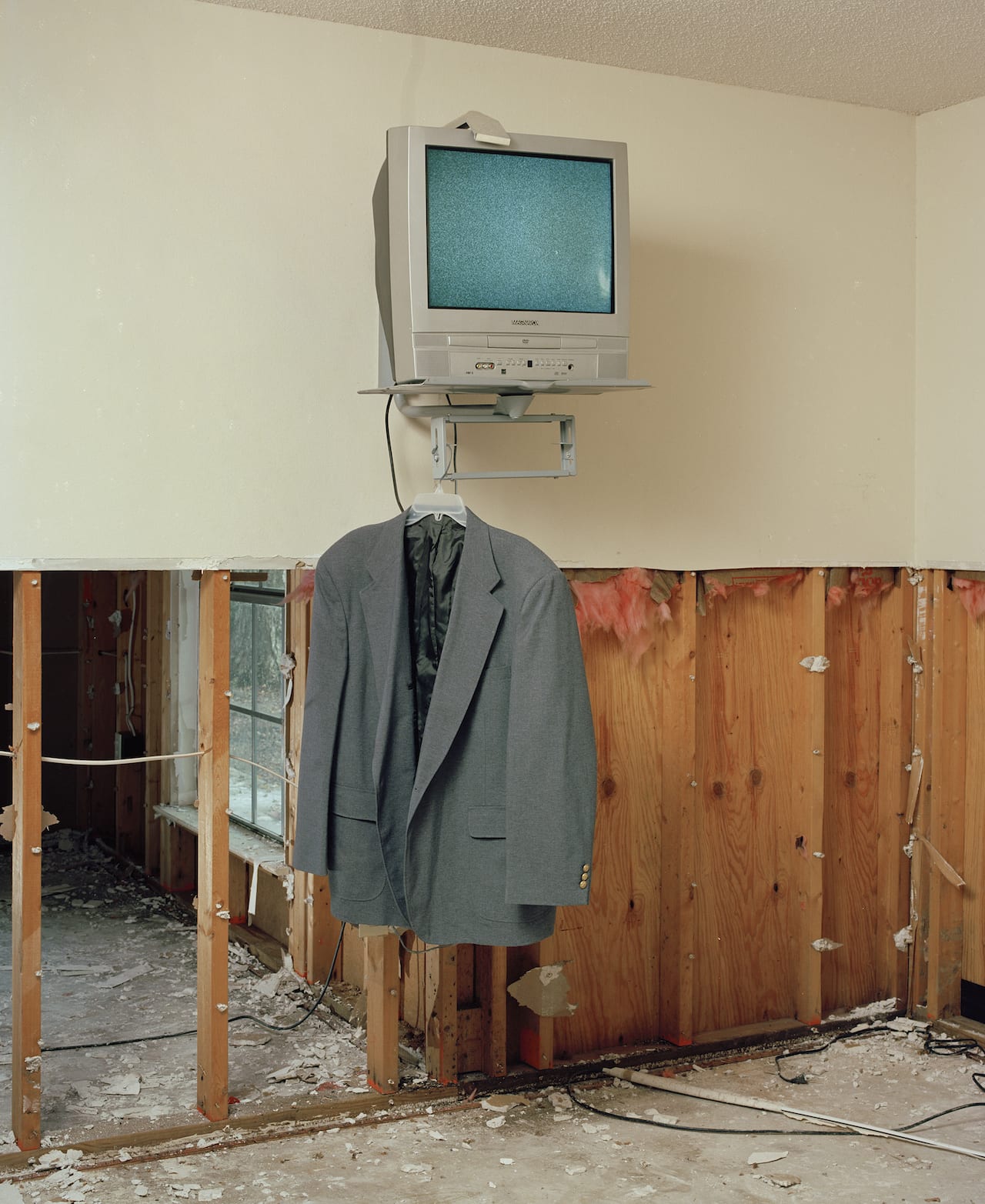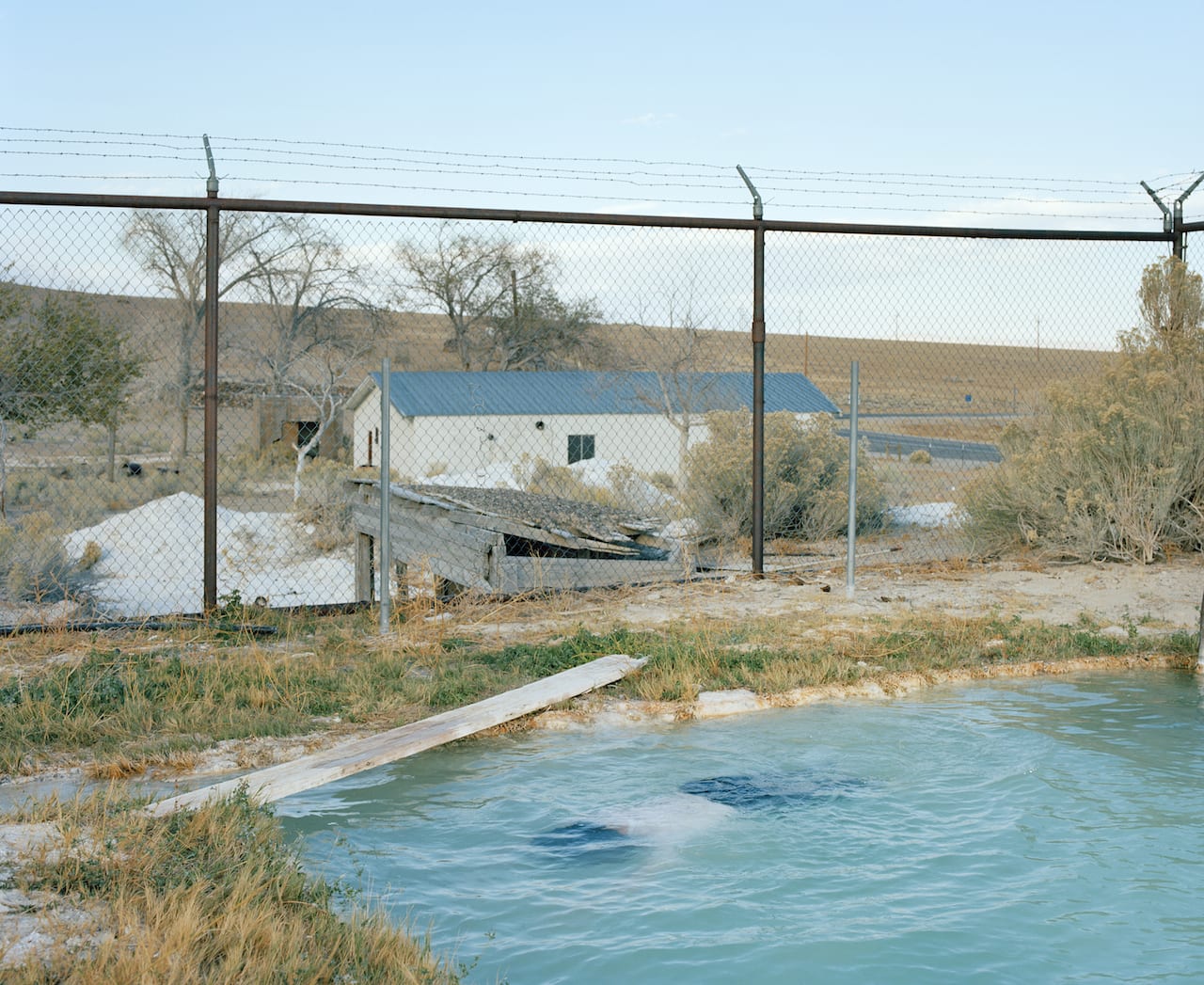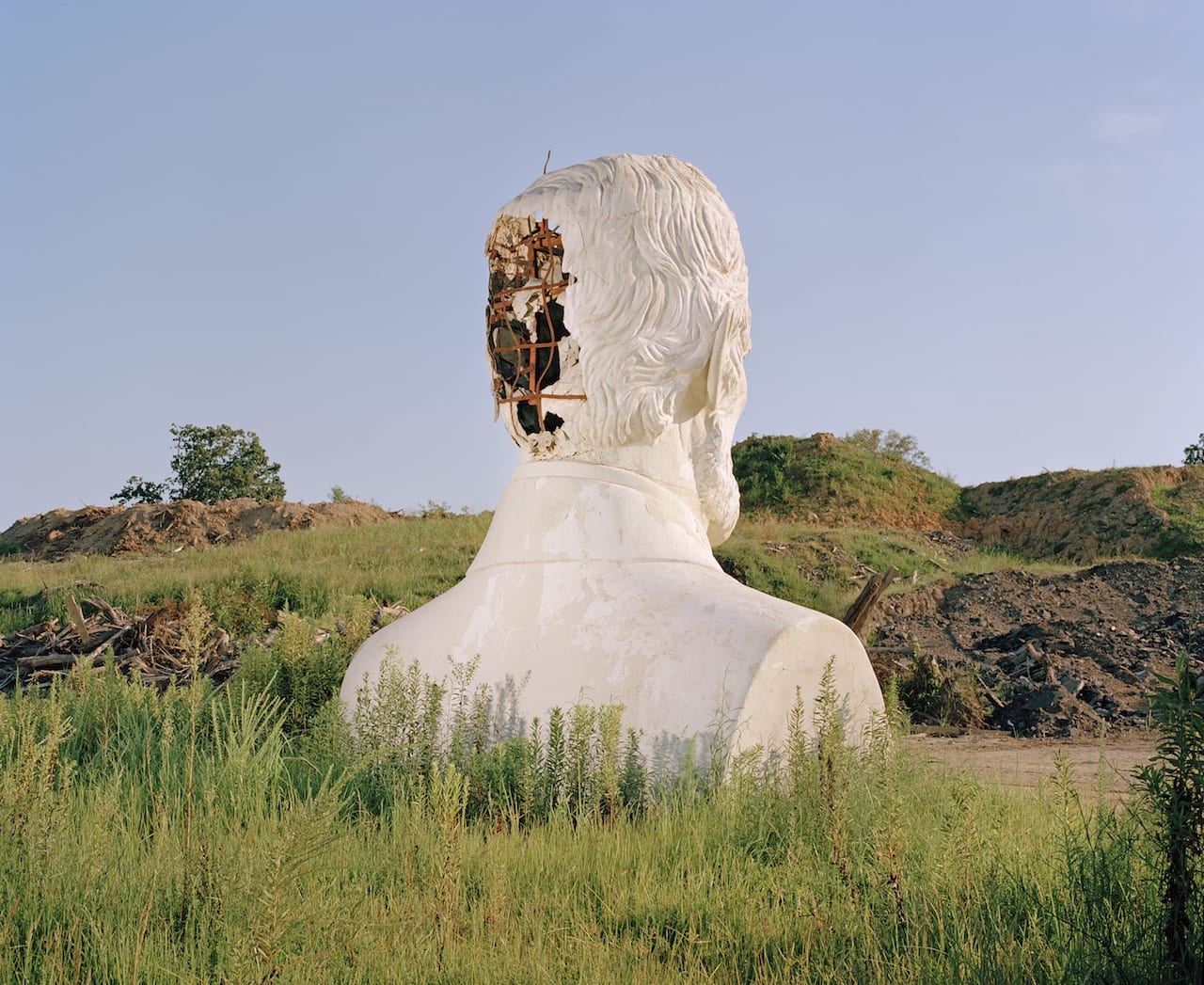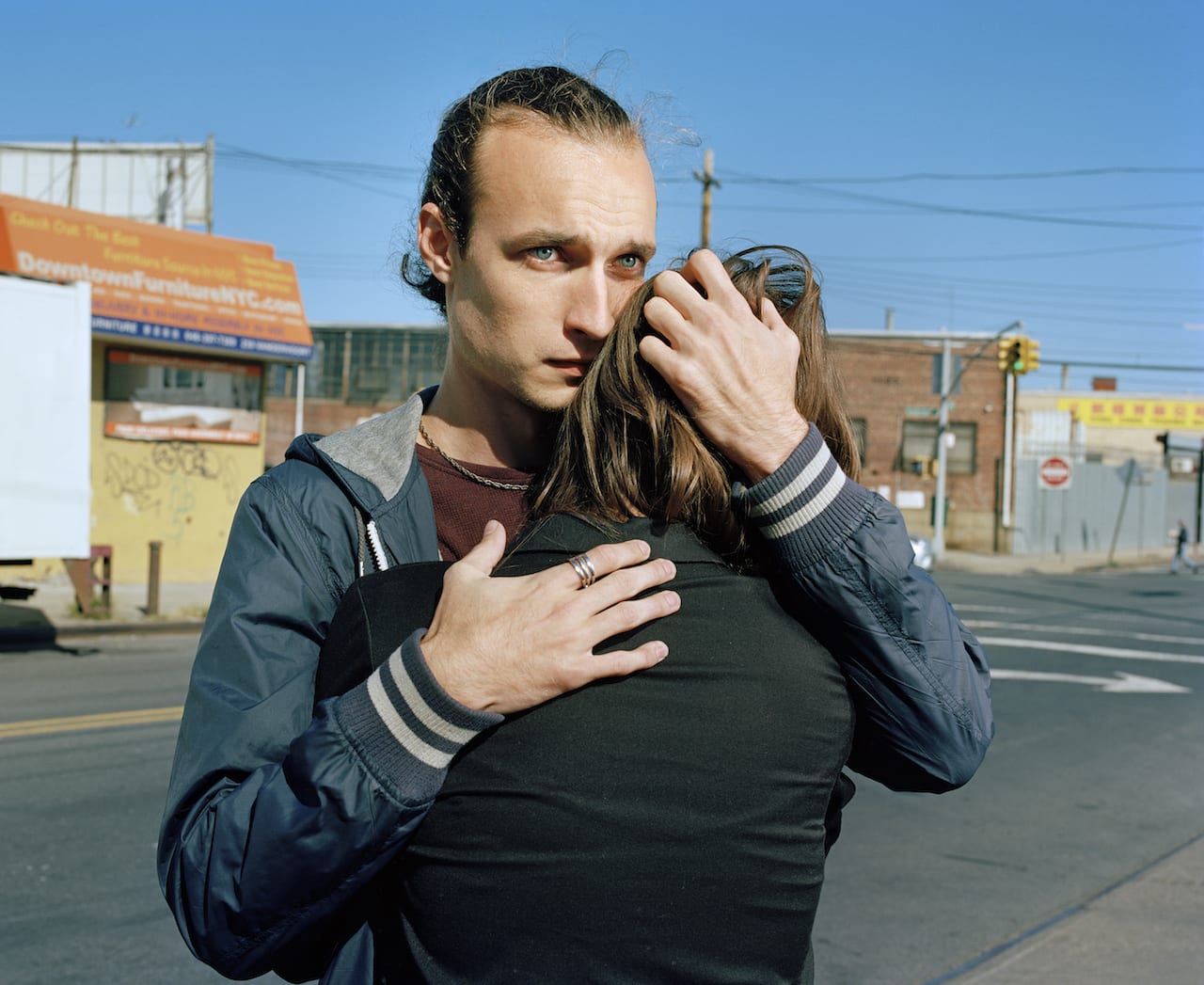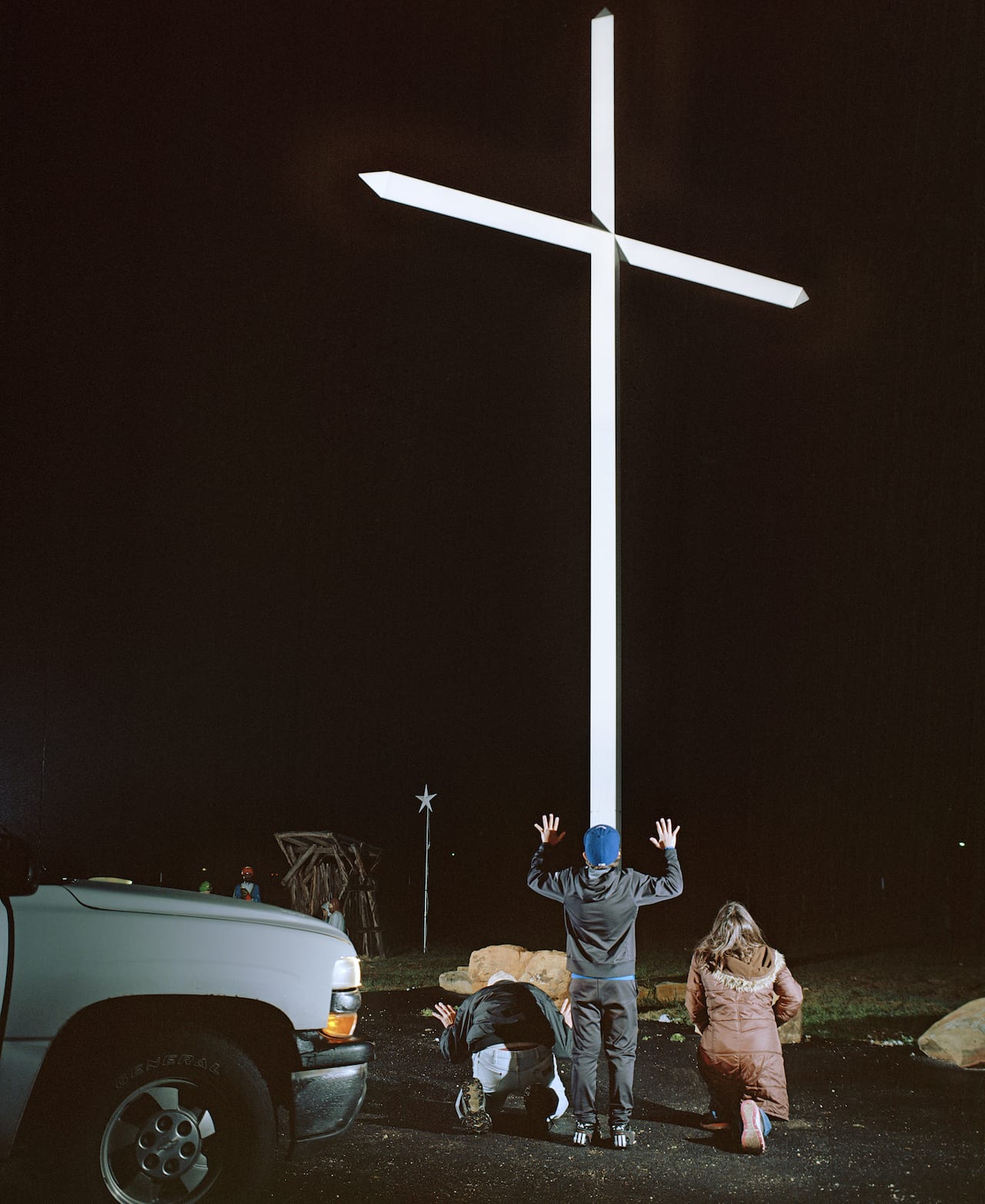It is difficult to unravel, in many of the stories that Max Pinckers tells, where fiction became unstuck from fact. Or how the characters in his photographs can look back out at the world so boldly, shake their heads at reality as most people see it, and tell stories that fly in its face. But for the Brussels-based photographer, the six curious individuals in his latest book, Margins of Excess – including a boy who compulsively hijacks trains, and a private detective with prosthetic hands – lead the way to understanding documentary photography’s role in the ‘post-truth’ era.
One such character, an American amateur inventor with a mane of silken hair, sat at the kitchen table of his home in Dunnellon, Florida and told Pinckers that he believed he had become the media’s new Osama bin Laden. “My name is Richard Heene. A few years ago I got into a bit of trouble,” said the forty-something showman, detailing the events that led him to end up behind bars.
“It went from a backyard experiment to something that was blown out of proportion.” As anyone who switched on US cable news in late October 2009 might tell you, Heene was talking about the ‘Balloon Boy’ incident.
On the morning of Thursday 15 October, Heene reported that his six-year-old son, named Falcon, had been carried away across the windy skies of eastern Colorado in a 20ft-wide, flying saucer-shaped helium balloon that he had constructed out of reflective silver foil. Over two hours later, the empty balloon fell from a height of 3000ft into a wheat field 15 miles away. Audiences remained hooked as suspenseful further hours passed, when suddenly Falcon emerged from the attic of the family’s garage – later appearing in an interview with CNN where he seemed to give the game away, saying his father did it “for a show” on TV.
Years later, even after pleading guilty to charges of wasting police time and spending 90 days in jail, Heene denies he lied and says he truly feared the boy was in the balloon. “I still can’t believe it to this day,” he said in an interview with the 29-year-old Belgian photographer. “I was told by the press back then that the only reason there were so many people out there was because nothing was going on. I think they were pursuing Bin Laden and then that kind of died out, you know? So, I feel like I was the next Bin Laden.”
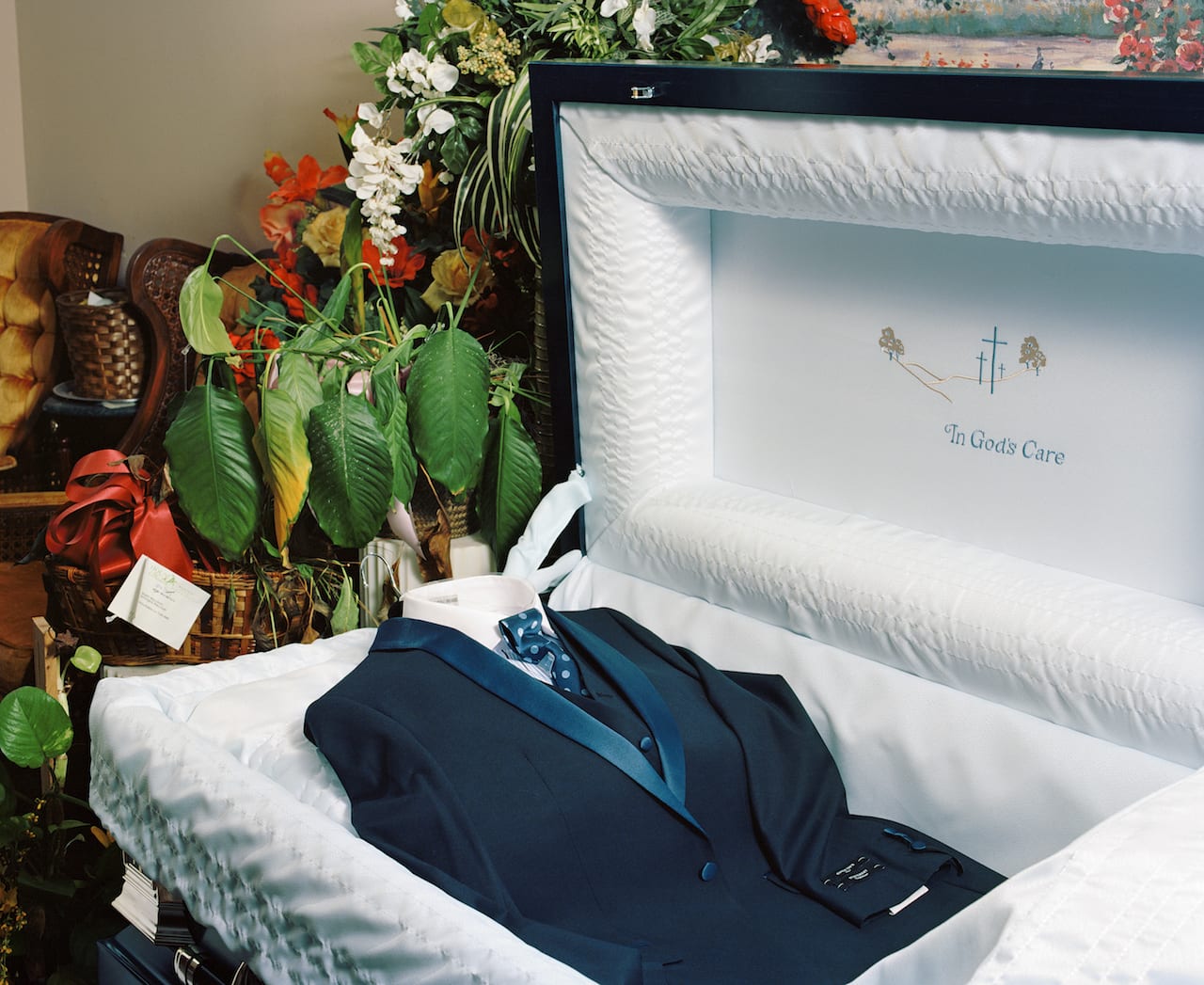
Heene is one of Pinckers’ people: individuals who achieved a moment of infamy when the “subjective reality” they had created in their imagination clashed into the verifiable truths that the news media deals in. In addition to the Heenes, Pinckers documents Rachel Dolezal, the civil-rights activist who was unmasked in 2015 as being born white, after spending years claiming to be African American. And there’s Herman Rosenblat, whose tale of romance with a girl he met on opposite sides of a concentration camp fence was hailed as the greatest love story ever heard, before being revealed as a fiction.
“Every one of them supposedly deceived someone or lied. But at the same time, they didn’t do that to con people or gain something out of it. It was always a very personal thing, creating your own world, and making it the way you think it should be,” says Pinckers.
While the Balloon Boy incident might seem opportunistic, tales like Rosenblat’s provoke ambivalence. Born in Poland, Rosenblat had lived the unimaginable childhood trauma of imprisonment at the Buchenwald camp in Germany, and had fallen into an intense romance that would last 56 years, with the woman who became his wife. But these two events were just not at the same time, as his love story had claimed, and without the charmed details – an apple shared between the prisoner and his lover – he had appropriated.
Rosenblat is the only subject whose story is told without a portrait, following his death in 2015. But more than one of his obituaries quote a revealing interview he gave to US morning television after the lies were exposed: “In my imagination, in my mind, I believed it.”
He and Ali Shalal Qaissi, a former inmate of Abu Ghraib jail who claimed to be the infamous hooded figure in the iconic photos of prisoner torture, possess memories of profound truth, even if their stories are not factually true, says Pinckers. The photographer never calls them liars, diplomatically explaining each had “a very personal or subjective way of dealing with reality that became difficult for news to grasp because it’s not based in facts”.
In Margins of Excess, Pinckers captures the aftermath when the media pushed back against the fiction: combining over-lit portraiture and staged fictions to communicate the subjective reality that media and more objective documentary photography cannot, he explains as we meet in the upstairs of a pub in Soho, London.
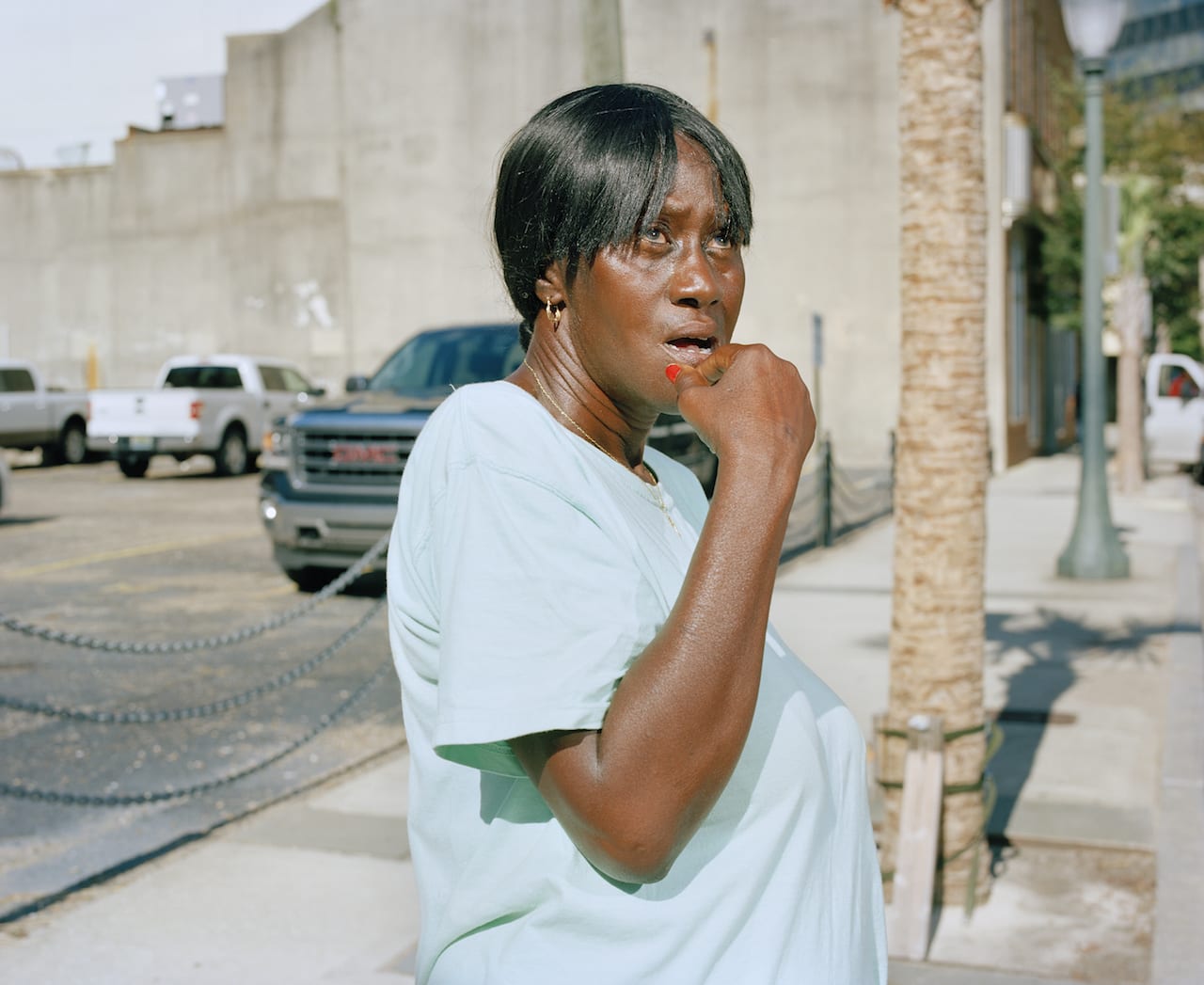
Pinckers presents the images as a book that defies being divided into individual pictures or standalone parts. The documentary photographs are blasted with lights resembling an ultra-bright US like one subject, a boy who compulsively hijacked subway trains, seated in a realistic simulation of a control cockpit. These are spliced together with the photographer’s own truth-blurring images: shots of actors chosen, Pinckers explains, for their ability to cry on demand, and directed to recreate poses of dramatic angst or woe.
Over 300 pages, it makes up a disorienting collage, also containing landscapes from the road, news clippings, first-person statements from the subjects – mea culpas or impassioned defences, depending on the character. It also makes use of subtle visual cues for the attentive, such as paper stock and photo placements that change according to what is represented. But few captions instruct readers, allowing them to follow the flow of images chosen for their visual rhythm over any comprehensible chronological or geographical journey.
“The images are not true, but they’re also not false,” explains Pinckers, who was commissioned to photograph North Korea’s carefully constructed façade of happiness for The New Yorker last year. “They’re taken in a space that cannot claim either. And maybe if we start to consider images like that, they can tell us something we don’t know how to categorise yet. That’s what I’m trying to think about.”
For Pinckers, it is familiar territory. He has built a body of work over the last eight years (including three previous books, each of which has featured in BJP since he appeared in our 2013 Ones To Watch issue) that spotlights his own questions about documentary photography’s lack of debate over how it confronts the new world we face: where the authority of the photograph as an independent document has vanished amid the proliferation of digital images, fake news and Photoshop.
“I think we are moving into a space where people don’t believe what they read in the news any more, they don’t trust what the politicians are saying, they don’t know where to look to get their reality,” says Pinckers, making the case for mixing fiction into documentary photography.
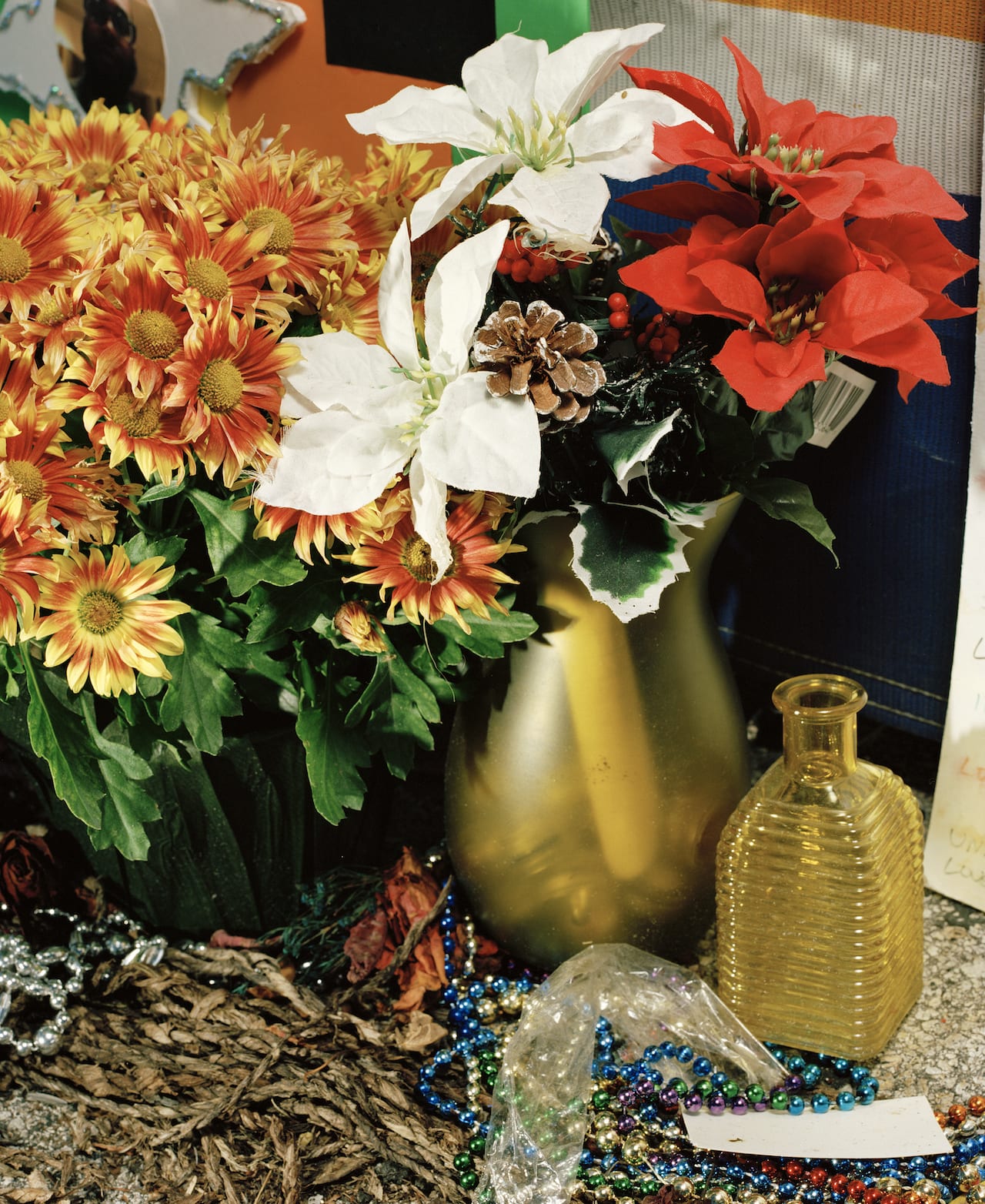
Two playful projects in 2017 both took on sacred cows of the photo industry: the first, in collaboration with a specialist in artificial intelligence, creating a camera with no viewfinder, named Trophy Camera v0.9, programmed to recognise trends in the previous winners of World Press Photo, and to only take photos it deems prize-worthy.
In Controversy, he travelled to the purported site of an icon of war photography, Robert Capa’s The Falling Soldier, an image that Spanish academic José Manuel Susperregui claims to have proved was staged. Pinckers captures the place Susperregui believes is the photograph’s true location using ultra-high resolution scans, a laborious process usually reserved for reproductions of famous artworks. Here, it cast the background olive orchard in a softly motion-blurred relief.
Both ideas reappear in Margins of Excess. Actors are posed into archetypical scenes chosen for their endless reproduction in awards shortlists and media coverage of terrorism or disaster. Across the pages, the eye is allowed to wander over charged images from one edge of the American continent to the other, without awareness of the jumps between different locations, times, fiction and fact.
Beginning the project in July 2016, Pinckers pre-empted the dangerous acceleration of fake images and alternative facts that followed the election of president Donald Trump. The book’s front cover bears an image of a couple locked in a tearful embrace, taken on the day of Trump’s election win, posed with actors, but scarcely distinguishable from similarly desperate, genuine scenes taking place that day across the country.
Pinckers says he did not tell his actors what the image would be used for – or even have a set idea at the time. Instead, during a year-long editing process, he assembled a free association between the book’s various motifs, including clones, TV studios, dioramas, 9/11 and the ‘War on Terror’, and religious iconography. Plus lots of hovering UFOs, reflecting America’s fevered online conspiracy theorists, Balloon Boy’s supposed vehicle, and Pinckers’ own ideas about image- making, perception and belief.
“If you believe in UFOs and you see something dashing across the sky, it’s going to be a UFO. And if you don’t believe in UFOs you’re going to see a falling star,” he says. “Most of the time, we try to confirm what we already believe and we only see what we want to see.”
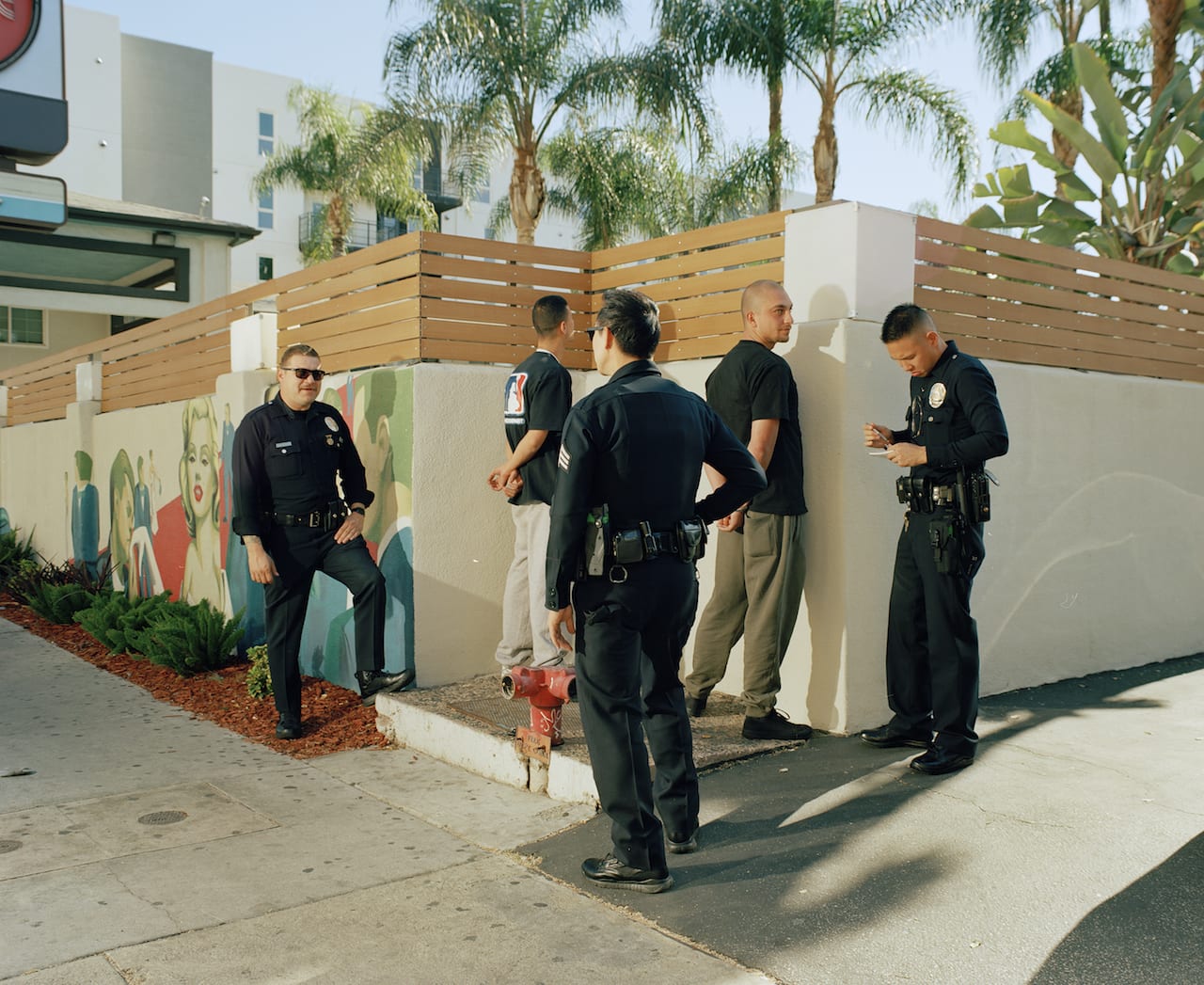
Until July last year, Pinckers was a nominee member of Magnum, but he says he was an odd fit, putting an early ban on any of his images being shared with newspapers. Having Magnum credentials helped on some stops on his US road trip, he says, but during the journey he and his partner – Victoria Gonzalez-Figueras, who doubles as the project’s researcher – juggled hats, presenting themselves as artists to subjects who were often mistrustful of journalists, or as academic researchers to government officials.
Pinckers makes clear he does not think the role of straight documentary photographer is dead, but feels it is in danger of getting trapped in an echo chamber, as photographers continue to pursue dated notions of objectivity and authenticity.
Looking at the World Press Photo winners, we see vital work but also, inevitably, rehashed tropes: photographers recycling the imagery of the Madonna and Child, Pinckers says, to give newspaper editors what they want. Are such images telling us about the tragedy they capture or our own beliefs? There’s a growing chorus that believes such archetypical images do a disservice to their subjects. Pinckers says such naive photos are lacking something if they are not acknowledging the process by which they are made.
“If you can take a photograph that knows it’s a photograph, and that thinks about being a photograph, then you’ve made, in my opinion, the perfect photograph,” says Pinckers, during a trip to visit his friend, fellow documentarian Mathieu Asselin, during the opening of the Deutsche Börse Photography Prize exhibition in London.
“But if you make one that just doesn’t know what it is, and pretends to be something it’s not, it’s something different. It has its place, but it’s different. I think self-reflexivity and self critique are crucial.”
He laughs at a recent headline that a Wildlife Photographer of the Year award was withdrawn after it was judged to have employed a taxidermy anteater. “Another classic case of a work that could be brilliant if only it was intended to be critical,” he says.
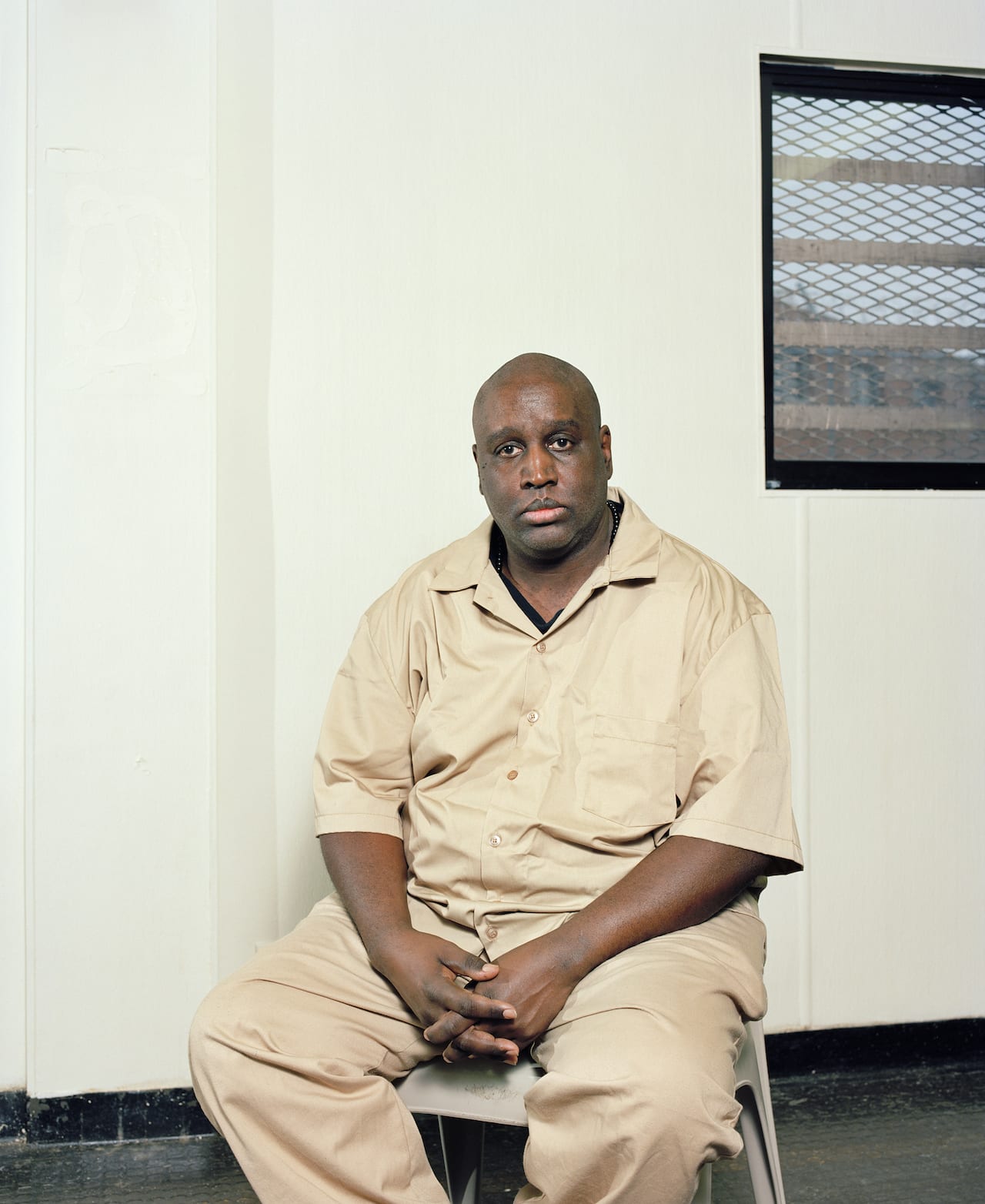
Asked if he has had any push-back from documentary photographers who feel criticised by his approach, or else concerned that such fiction is infiltrating documentary form, Pinckers says no. Few photographers are engaging in much-need critical discussions about its future that drive forward the developments of other visual arts, he says. Even photobooks rarely receive critical reviews.
But change is coming. He references documentary filmmaker Adam Curtis for his claim that as technology and society advances, “frames of realism” have progressed from paintings of battlefields, through the golden age of photojournalism, the war in Vietnam, and the emergence of TV news. “It’s moving towards a different kind of realism that is rooted in individual emotions and feelings and imagination,” says Pinckers, adding that he is wary of how authority figures, such as Trump, have already weaponised this new realism to cast doubt on their critics.
But, for documentary photography, it is a step towards greater understanding of itself: “Maybe we should start looking at images, not as objective representations of reality, but as little arguments. Every image is a small argument, made by someone, that poses a question – rather than tries to prove something, or really even make you think something.”
maxpinckers.be This interview is taken from the July issue of BJP www.thebjpshop.com
Read BJP’s previous interviews with Max Pinckers:
https://www.1854.photography/2017/07/lotus-pinckers/
https://www.1854.photography/2016/11/max-pinckers-japanese-tourist/
https://www.1854.photography/2015/07/learning-about-love-from-bollywood/
